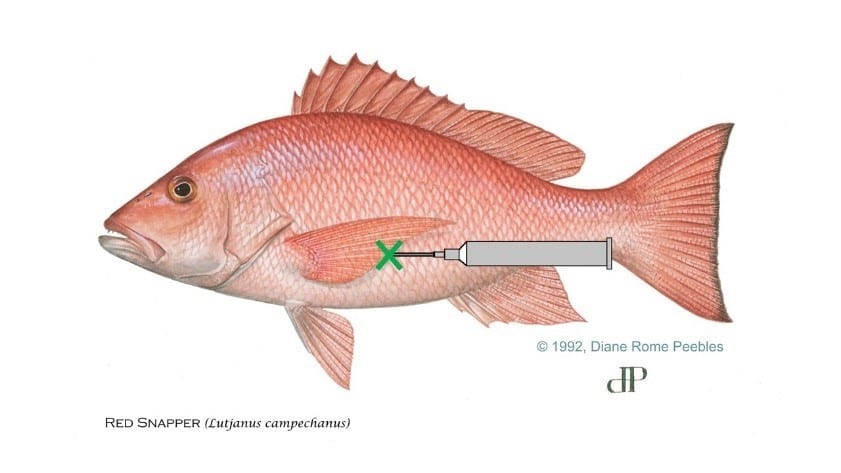FWC UPDATE: When it comes to barotrauma, the right tools mean everything
It’s that time of year when you may be fishing for snapper and grouper. Continue your role as a conservationist by looking out for fish with signs of barotrauma and being prepared to respond. Barotrauma is a condition seen in many fish caught in waters greater than 50 feet that is caused by expansion of gases in the swim bladder.
It’s important to know in advance what tools are available and how to use them to help fish return to the bottom and increase their chances of survival. Signs of barotrauma include the stomach coming out of the mouth, bulging eyes, bloated belly and distended intestines.
Descending devices take fish back down to a depth where increased pressure from the water will recompress swim bladder gases. They fall into three categories: mouth clamps, inverted hooks and fish elevators. Learn more about descending devices and how to use them at MyFWC.com/SaltwaterFishing by clicking on the “Descending Devices” playlist.

Venting tools are sharpened, hollow instruments that treat barotrauma by releasing expanded gas from the swim bladder, enabling the fish to swim back down to capture depth.
Please note, items such as fillet knives, ice picks, screwdrivers and gaffs are not venting tools and should never be used to vent a fish. Venting a fish incorrectly may cause more harm than good.
To properly vent, lay the fish on its side (on a cool, wet surface). Venting tools should be inserted 1-2 inches behind the base of the pectoral fin, under a scale at a 45-degree angle, just deep enough to release trapped gasses. Never insert venting tools into a fish’s belly, back or stomach that may be protruding from the mouth. Learn how to vent properly by visiting https://youtu.be/jhkzv1_2Bpc .

Descending devices and venting tools should only be used when fish show one or more signs of barotrauma and cannot swim back down on their own. It is essential to work quickly when using these tools and return the fish to the water as soon as possible. Anglers should choose the device and method they are most comfortable with and that best fits the situation.
To learn more about catch-and-release techniques, visit MyFWC.com/Fishing and click on “Saltwater Fishing,” “Recreational Regulations” and “Fish Handling.” To learn more about barotrauma, descending devices and venting tools, visit our YouTube channel at MyFWC.com/SaltwaterFishing. For answers to questions, contact 850-487-0554 or Marine@MyFWC.com.




